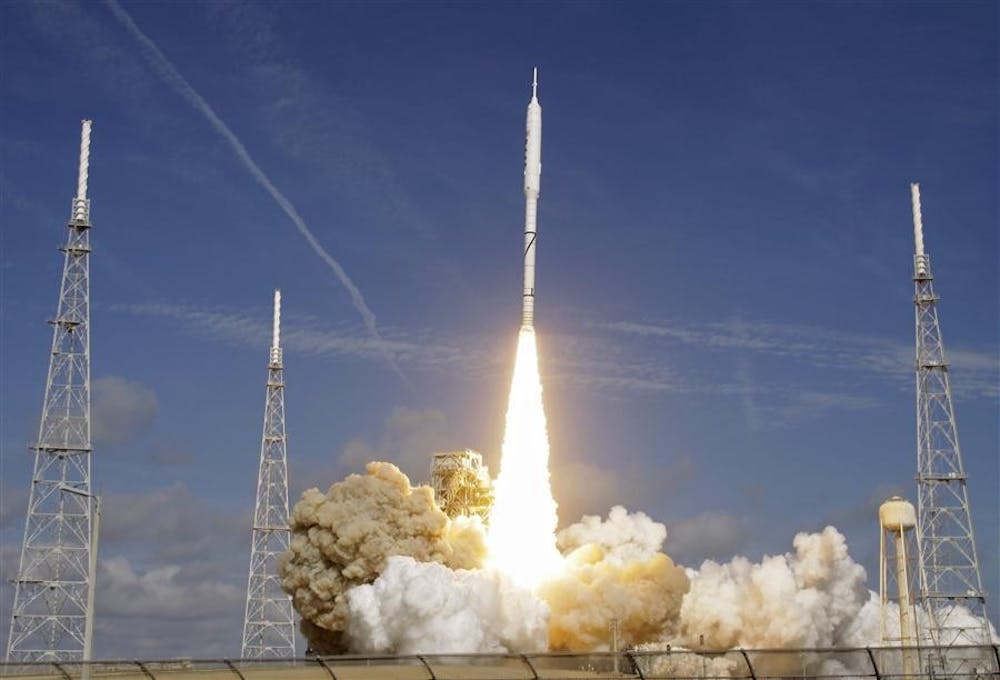CAPE CANAVERAL, Fla. — NASA's newest rocket blasted off on a brief test flight Wednesday, taking the first step in a back-to-the-moon program that could be shelved by the White House.
The 327-foot Ares I-X rocket resembled a giant white pencil as it shot into the sky, delayed a day by poor weather.
Nearly twice the height of the spaceship it's supposed to replace — the shuttle — the experimental rocket carried no passengers or payload, only throwaway ballast and hundreds of sensors. The flight cost $445 million.
It was the first time in nearly 30 years that a new rocket took off from Kennedy Space Center. Columbia made the maiden voyage for the shuttle fleet back in 1981.
Liftoff, in fact, occurred 48 years and one day after the first launch of a Saturn rocket, a precursor to what carried astronauts to the moon during the Apollo program. The Saturn V moon rockets were the tallest ever built, an impressive 363 feet.
Wednesday's launch, years in the making, attracted a large crowd.
The prototype moon rocket took off from a former shuttle launch pad at 11:30 a.m., three and a half hours late because of bad weather. Launch controllers had to retest the rocket systems after more than 150 lightning strikes were reported around the pad overnight. Then they had to wait out interfering clouds.
The ballistic flight did not come close to reaching space and, as expected, lasted a mere two minutes. That's how long it took for the first-stage solid-fuel booster to burn out. But it will take months to analyze all the data from the approximately 725 pressure, strain and acceleration sensors.
The maximum altitude of the rocket was not immediately known, but had been expected to be 28 miles. Parachutes popped open to drop the booster into the Atlantic, where recovery ships waited.
The upper portion of the rocket — all fake parts — fell uncontrolled into the ocean. Those pieces were never meant to be retrieved.
Wednesday's launch represented the first step in NASA's effort to return astronauts to the moon. The White House, though, is re-evaluating the human spaceflight program and may dump the Ares I in favor of another type of rocket and possibly another destination.
NASA contends the Ares I will be ready to carry astronauts to the International Space Station in 2015, four to five years after the shuttles are retired. But a panel of experts said in a report to President Barack Obama last week that it will be more like 2017, and stressed that the entire effort is underfunded.
The first Ares moon trip would be years beyond that under the current plan, known as Constellation.
No matter what happens, NASA managers said they will learn a lot from this experimental flight, even if it's for another type of rocket.
"A lot of the gold that we had to mine in doing this Ares I-X test flight, we've already realized in the people," Constellation program manager Jeff Hanley said earlier this week. "The investment that we've made and the people and the learning is preparing us to do whatever the nation asks this team to do in the months and years ahead."
NASA's new rocket lifts off on short test flight

Get stories like this in your inbox
Subscribe



